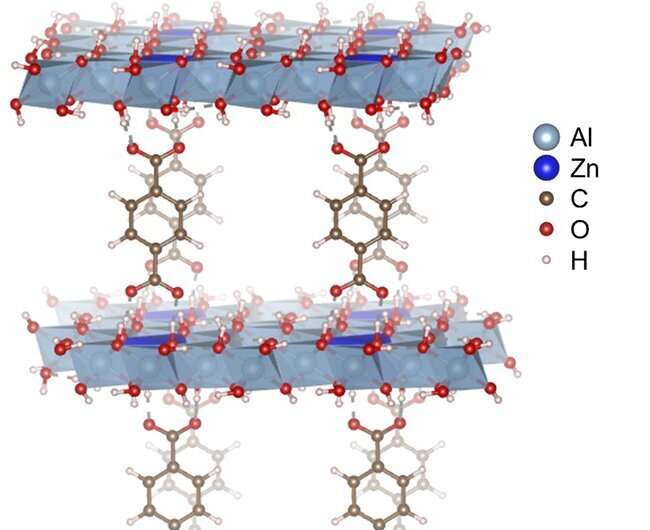This article has been reviewed according to Science X's editorial process and policies. Editors have highlighted the following attributes while ensuring the content's credibility:
fact-checked
trusted source
proofread
Porous material for selective trapping of carbon dioxide and toxic gases

A research team at POSTECH has successfully synthesized a new hybrid material that effectively captures carbon dioxide and other toxic gases through its porous organic-inorganic structure.
The sparsely-pillared organic-inorganic hybrid compound (SPOIC) was developed through a collaborative effort led by POSTECH professors Jisoon Ihm (Department of Physics), Kilwon Cho, Seok Hwan Park (Department of Chemical Engineering). SPOIC features a myriad of tiny pores that provide a wide surface area; organic and inorganic components that are non-toxic to humans; and a safe, simple, and eco-friendly production process.
This material is designed to maximize the interlayer space in the aluminum hydroxide's layered structure by inserting organic molecules with a wide interval between the layers, creating a form that maximizes interlayer space. As a result, the molecules inserted into this space become stably adsorbed or trapped by binding to the inner surfaces of the layers.
This material is highly effective in adsorbing, storing, or removing diverse harmful substances, including greenhouse gases such as carbon dioxide and methane, pollutants like nitrogen oxides that cause particulate matter, and heavy metals and radioactive materials. It can also serve as a versatile platform material for attaching functional groups for specific applications.
After developing their latest creation, lead investigator Jisoon Ihm entered the XPRIZE Carbon Removal, an international competition aimed at capturing and removing carbon dioxide. Professor Ihm's team obtained qualification certification to participate and showcase their innovation. The novel material has been featured on various mainstream media outlets in Korea as well.
This material has already obtained patents in Korea, Japan, and the United States.
Professor Ihm remarked, "We anticipate this material to be widely used for capturing carbon dioxide and various harmful substances."
Provided by Pohang University of Science and Technology





















